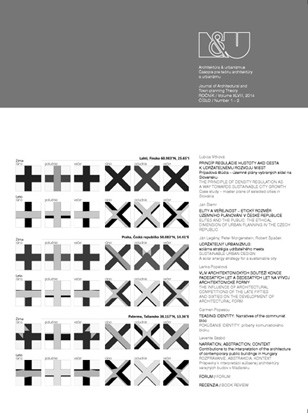NARRATION, ABSTRACTION, CONTEXT. Contributions to the interpretation of the architecture of contemporary public buildings in Hungary
NARRATION, ABSTRACTION, CONTEXT. Contributions to the interpretation of the architecture of contemporary public buildings in Hungary
Author(s): Levente SzabóSubject(s): Cultural Essay, Political Essay, Societal Essay
Published by: Historický ústav SAV, v. v. i.
Keywords: contemporary Hungarian architecture, narrative concepts, abstraction, context-oriented architecture, design strategies
Summary/Abstract: In the last two decades, the reception of Hungarian architecture has mainly been aligned towards international tendencies and theoretical concepts. Critics have thought in stylistic categories, and rightly so, since the comparison to international trends and the perception of Hungarian processes seemed obvious from the concepts of interpretative point of view. However, there are several arguments in favor of using new aspects that lead far beyond style characteristics for the analysis of architectural developments of the recent past and present times. My study is an attempt to clarify and to systematize the top- ranked and the most typical architectural creations of recent years through examining the origin of their concepts. An analysis from this standpoint can result in the conclusion that often different formal or stylistic concepts belong to the conceptual scope of a typical architectural strategy with an identifiably similar approach. This finding is the most exciting development in contemporary Hungarian architecture. Thus, instead of preliminary theoretical concepts or exterior formal and stylistic features, the methodology of the architectural concept is the focus of the analysis. It takes the assumption that the tendencies of contemporary Hungarian architecture of the last decade could not be classified by their similar use of materials or by an appearance that seemed to be unified even a decade and a half ago (e.g. regionalism or the brick architecture typical at the turn of the millennium) but by the concrete, individual strategies of the architects. Nevertheless, these architect-rooted approaches clearly outline three radically different concept-creating tendencies that can be described by the concepts of narration, abstraction and context. This tripartite conceptual construction makes it easy to identify several strong examples; at the same time it also draws attention to the remarkable concepts of transition that are rich in complexity. PROBLEMS OF THE VALIDITY OF STYLISTIC INTERPRETATIONS The present study is not intended as a full exploration of the reasons that have lead to a decline in the importance of stylistic aspirations at present. However, it is worth recalling – without trying to be exhaustive – some of the approaches and explanations which are now out of central focus or which can uncover our changed circumstances. Only a few comprehensive analyses exist regarding the architecture of the decade after the regime change. The essay of Ferenc Vámossy written in 1999 still placed the most prominent Hungarian examples into definite stylistic categories, distinguishing high-tech aspirations, contextualism, post-modernism, deconstructivism, neo-modern and organic architecture. In his study published in 2001, Rudolf Klein tried to offer a comprehensive picture of contemporary Hungarian architecture. Though his groups – namely pragmatic constructors, organic architects, post-modernists and deconstructivists...
Journal: Architektúra & Urbanizmus
- Issue Year: 48/2014
- Issue No: 1-2
- Page Range: 90 - 105
- Page Count: 16
- Language: English

